What is customer feedback?
Customer, or client, feedback is the information customers provide about their experience with you. It can take a few different forms – customer reviews, social media comments, star ratings, chat interactions, spontaneous email messages or face-to-face conversations between customers and employees.
Sometimes customer feedback will tell you exactly what is wrong and suggest a solution – or explain what went right and what they loved about the experience. At other times it can take a little more work, through techniques like data processing and key driver analysis, to understand exactly what customer feedback is telling you so you can translate that information into action.
Get started with our free customer satisfaction survey template
Types of customer feedback
Often when we talk about collecting customer feedback, it’s assumed that the customer feedback in discussion is explicit feedback. This is where a brand asks a specific query with the aim of generating a score, which we’ll touch upon later.
However, this type of feedback only offers one view of the customers’ opinions – and often, it represents what a customer says they think or will do, not the reality. This is where implicit feedback can be helpful, as it offers you insights into how customers really feel, think, and what they will do.
Customer feedback you can collect includes:
- Structured feedback
- Unstructured feedback
- Solicited feedback
- Unsolicited feedback
There’s often crossover between the above types.
Structured, solicited customer feedback
There are a number of different customer metrics to benchmark and monitor customer feedback that provide us with data that is structured and solicited. These are useful for creating benchmarks and for seeing how your brand is performing on a high level. The most common are:
Net Promoter Score (NPS®)
NPS measures customer loyalty by asking the question: ‘How likely is it that you would recommend X to a friend or colleague?’ It is the most common feedback survey metric – easy to understand, quick to complete, and gives a big-picture gauge of customer loyalty. However, NPS doesn’t provide insights into how customers feel.
CSAT (Customer satisfaction)
CSAT evolved from market research surveys, and is easy to understand, simple to use, and can be rich in insight. By asking: ‘How would you rate your overall satisfaction with the goods/service you received?’ you’ll find out how satisfied your customers feel. Customer satisfaction is vital to retain interest – so this metric is particularly important.
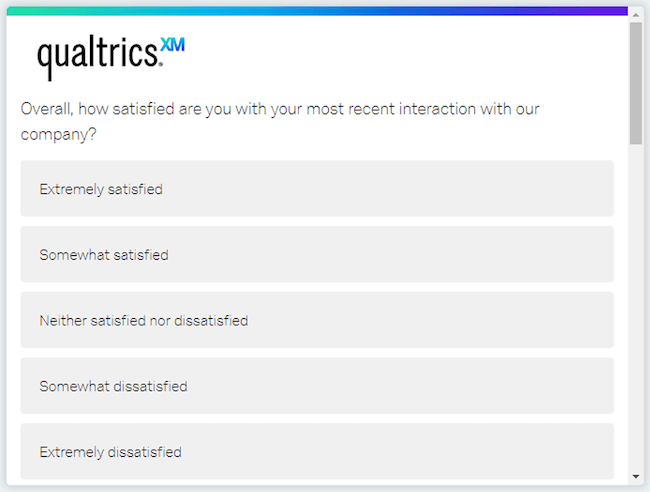
CES (Customer effort score)
CES, as the name suggests, focuses on the effort your customer needs to put in to interact with you. The theory is, the lower the effort, the happier the customer. CES asks a question like: ‘How easy was it to deal with our company today?’
Structured, unsolicited customer feedback
This type of feedback is represented in your operational data. Your customers aren’t asked for this directly when you collect customer feedback, but you gather this type of information about your customers when they interact with you.
Unstructured, solicited customer feedback
You request this type of feedback when you allow an open text response on a survey, ask for a response on social media, or conduct an interview with your customers. Although you’ve requested it, it is free in form and driven by your customers.
Unstructured, unsolicited customer feedback
Unstructured, unsolicited customer feedback is the hardest to collect – but it can often be the most indicative of a customers’ true feelings. This feedback will happen organically when a customer calls you, mentions you on social media, types queries into a chat conversation, or leaves a review on a third-party site.
Using all four methods of collecting feedback means you get the full picture of your customers’ views, feelings, and actions. Rather than trusting one type of feedback data to inform you correctly on actions to take, you can see where your customer truth lies.
Why is customer feedback important?
There are so many benefits to collecting customer feedback. Here are just a few.
Alert system
Customer feedback can alert you to failings and inefficiencies in your processes and systems. When you’re tuned into feedback and set up to act on it quickly, it can save you a lot of time and effort by warning you of issues early. In fact, you’ll even be able to solve widespread issues before they arise, meaning customers will remain satisfied.
Performance indicator
When you gather customer feedback at scale across a large base, it becomes a data source that can highlight regions or departments that are doing better or worse than others. You’ll be able to build on what works and fix what doesn’t.
Relationship builder
Inviting, collecting, and responding to customer feedback makes the people who buy from you feel connected and listened to. When you’re visibly engaged with customer feedback on public channels, people can see what kind of business you run and what your values are. They’ll see you care about the customer experience.
Detractor-transformer
When customer feedback is unfavorable, you have a golden opportunity to turn a failing relationship around by closing the loop.
Brand booster
When you listen to and act on customer feedback, you’ll see the results in your brand’s reputation. Along with customer service and product quality, how you handle feedback is a core part of a great customer experience, which in turn builds loyalty and brand value.
Market research tool
Feedback helps you understand your customers better. Not only what they want and what they don’t, but who they are, what drives them, what their lives are like and what they value most. Learn more about market research tools here.
Career development vehicle
Getting feedback on interactions with your employees can provide you with a basis for career development, helping team members build their skills and understand their strengths.
Idea generator
Whether it’s direct suggestions from individual customers or a trend that emerges from your data at scale, customer feedback can act as a springboard for new ideas and directions for product and service development.
There are numerous avenues today for collecting this feedback – from customer communities, to email outreach, to on-site surveys and market research.
The customer feedback loop
An important phrase you’ll hear often in customer feedback programs is the ‘customer feedback loop’ – so before we move on, it’s worth familiarising yourself with what it is and why it matters.
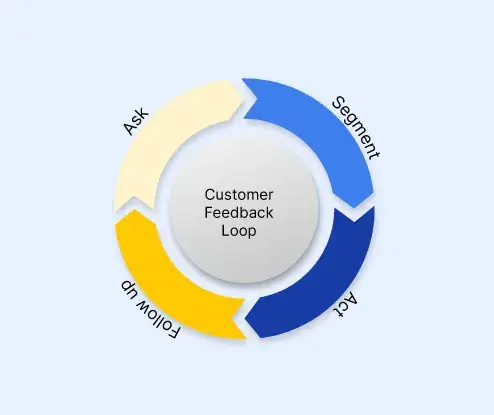
Image Source: Vox
What is the customer feedback loop?
The ‘loop’ refers to the circular process of gathering feedback, acting upon what you’ve learned, and then asking for feedback again. Because this journey is circular, it describes an ongoing process that never really ends, but that should result in continuous improvement.
The main components of the loop are as follows:
– Gather
Here you’re looking to gather as much customer feedback as possible, via any or all of the methods we’ll discuss in the next section. You should be collecting feedback that can be interpreted through the lens of “how can we improve?”
– Segment
New customers might have a different experience from repeat buyers or long-time subscribers, and customers in different locations might be dealing with different customer support teams. So it’s important to be able to segment your feedback into groups that tell a consistent story.
– Analyse
What are your customers saying about their experiences? Where were they let down? What left them happy? And where along the buying journey were there areas of friction? In this stage, you’re looking for new information, as well as to see how things have changed since your last round of feedback.
– Act
Running a customer feedback survey or other feedback method is a waste of time if you don’t use the information proactively. At this stage in the customer feedback loop, your number one goal is to ensure that the customer feels listened to by making changes that can streamline processes or fix things that they tell you are problems.
Remember: the end of this four-step process is actually just the beginning of the next one; ongoing improvement is a cyclical endeavour.
Why is the customer feedback loop important?
Implementing a customer feedback loop is how you’ll drive positive change within your organisation’s core processes. And doing that has a bunch of important knock-on effects, but these are perhaps the two most important:
It can identify hidden problems
Listening to feedback can sometimes result in a vital reality check. People outside your business, who buy or use your products, are the only people with a truly objective eye on how things operate – so they’ll often point out pain points that people inside the organisation overlook.
It reduces customer churn
Fixing issues that you know customers are facing is a surefire way to stop losing them. Customer churn is directly influenced by how satisfied people are with the buying or onboarding process, as well as product quality and the kind of aftersales support on offer. So doing what you can to continually tighten the screws at every stage will make customers want to come back, driving up loyalty.
Did you know…
- 63% of consumers said companies need to get better at listening to their feedback
- 62% of consumers said that businesses need to care more about them
- 60% of consumers would buy more if businesses treated them better
In short? What makes customer feedback important is that acting upon it in the right way can hugely impact customer satisfaction, loyalty, and behavior.
How to gather customer feedback
There has never been more choice available for how to collect customer feedback of all types. Today’s omnichannel customer service technology allows companies to engage with customers wherever they are and capture feedback at every customer touchpoint throughout their journey. Developing and enacting a customer feedback strategy is more cohesive than it has ever been.
The benefit is linking customer, market, and employee data together. This provides a more holistic view to the traditional approach where companies engage through just a few channels, often leading to incomplete information about customer preference, behaviour, and satisfaction. Below are a few ways you can collect customer feedback.
Reaching customers via their inboxes is a trusted, cost-effective, and familiar way to gather customer feedback. Most people have an email account that they regularly check, meaning your reach potential is large.
Your customer will be used to seeing invitations to give feedback arrive by email, which means they’ll be comfortable seeing your request appear. Another benefit is that they’re likely to feel confident clicking through to a feedback survey from you when it’s from a familiar and trusted email address, and relates directly to a purchase they can remember making.
SMS
Like email, SMS is a channel that a lot of people use, even if they’re not enthusiastic users of digital communications – and that means it’s a method that offers plenty of reach within your customer base. It’s also simple and low-cost to implement, although there is more of an expense than with email or social media due to network charges. SMS is great for collecting a small amount of feedback at a time, e.g. for obtaining an NPS score for a single purchase. Quick and easy.
Social media and review sites
One in three consumers opts for sharing their concerns over social media, instead of phone and email support. More and more businesses are now listening actively on social media and using its capacity for measurement and metrics to their advantage.
Besides answering customer complaints, social media is a great place to collect customer feedback via listening and sentiment analysis. Whereas SMS provides an active response to a direct question (for example, how satisfied are you with your recent purchase?), social media also helps gather feedback from customers that was provided indirectly (where a question was not asked). They might tag the brand directly, or share their opinion indirectly with their followers. Social listening will pick it up.
But that’s not to say survey feedback isn’t an option, in fact, many consumers are willing to voice their opinions and take short surveys via channels like Facebook and Twitter.
In-product feedback
One of the best ways to understand if your digital product is meeting your customer’s needs is to add a feedback request feature directly in the product interface – i.e. on a home screen or main dashboard. If there’s a product malfunction or issue, this method will allow you to receive a notification about it right away.
Website feedback
There are a few ways to ask for feedback on your website. You could have a feedback tab or dedicated page on your site, or use a web intercept. Dedicated pages are best used for general feedback or to act as a landing page for an email survey link. You can also have a feedback tab, where customers can quickly answer a two-question survey without interrupting their browsing journey. Web intercepts are best for sites that have a high volume of visitors so you can get feedback while consumers are browsing your site.
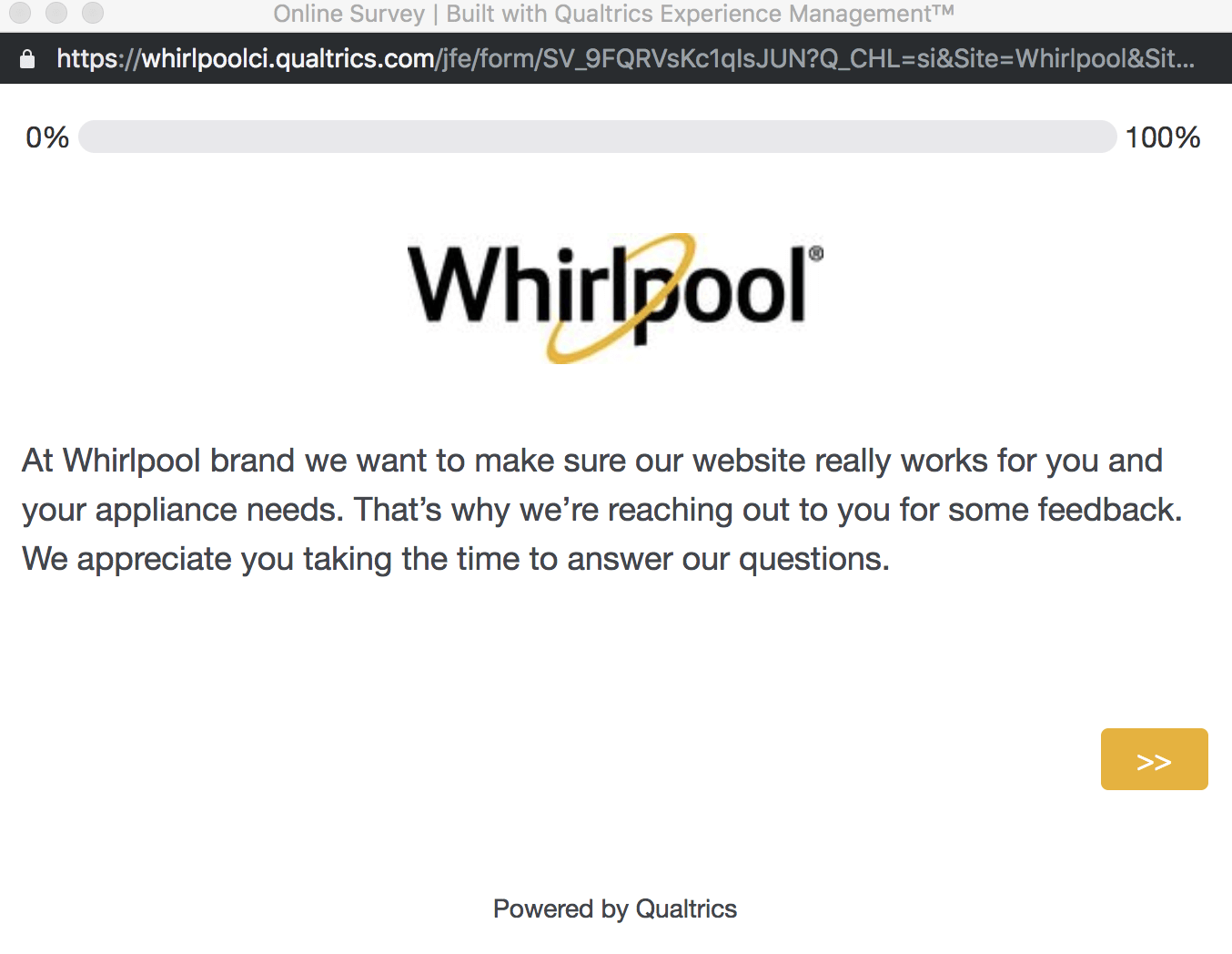
In-app feedback
Mobile customer interactions are becoming increasingly popular and companies must capitalise on the ease of submitting in-app feedback. This allows organisations to seamlessly embed key questions and feedback forms in the app itself. Profile and action criteria can ensure the right feedback is solicited at the appropriate time
Interviewing
When you need in-depth, qualitative feedback from your customers, one-on-one interviews with a researcher can be valuable. Although they’re labour-intensive, meaning you can only reach a relatively small number of people, interviews can help you to validate hypotheses and observations you’ve made based on data from a broader population.
They can also help with gaining an understanding of a complete customer experience, as opposed to a component part like a checkout or a contact centre interaction.
Focus groups
Focus groups offer similar benefits to interviews but are likely to be more in-depth and more structured, as they are led by a moderator who will guide the discussion. You’ll get the benefit of multiple points of view, and may uncover deeper thoughts and ideas than you would with a single interviewee thanks to discussion and debate between participants.
Panel research
Need feedback data in a hurry? Looking for insights from a hard-to-reach population? Or perhaps you want to conduct a customer feedback program over the long term, using answers from the same people (or types of people) each time.
Recruiting or hiring a survey panel gives you the kind of consumer feedback you want, when you want it. Panel members are more likely to answer surveys thoroughly and to respond to survey invitations, since they are committed to panel membership rather than taking surveys on an ad hoc basis.
Operational data
Your operational data can give you clues for understanding customer feedback – both the responses customers give you and the actual actions they take. If, for example, your NPS score is high when collecting feedback but you see no recommendations taking place and your customer base isn’t growing, there is a disconnect between what your customers are saying and what they are doing. Unsolicited feedback can be helpful for pinpointing this type of gap.
Get started with our free customer satisfaction survey template
When to collect customer feedback
Before collecting feedback, it’s important to determine your goal to ensure you’re getting the data you need. Your survey questions and timing could be drastically different, depending on what you’re trying to measure.
Typically, there are three optimal periods to collect customer feedback:
- Post-purchase evaluation – is feedback from an individual customer at the time a product or service is delivered (or shortly afterward). This type of satisfaction evaluation is often part of a CRM (Customer Relationship Management) system and its goal is to cement a long-term relationship with that customer. These kinds of surveys are best delivered within 24 hours of the engagement.
- Periodic satisfaction surveys – provide period-specific feedback from different customer segments. The annual customer satisfaction survey is a good example; these surveys offer occasional snapshots of customer experiences and expectations.
- Continuous satisfaction – tracking uses regular post-purchase surveys (daily, monthly, quarterly), so you can assure a high level of quality over time. We recommend this approach, as it lets you capture feedback over the entire customer lifecycle, and you can keep a pulse on how the customer experience is performing. It identifies precisely what to do and when in order to have the biggest impact on your customer experience.
What should you do after you gather customer feedback?
Act on it. While it’s great to collect customer feedback and understand your customers, it only makes an impact if you put the data to use. Customer feedback can help improve every aspect of your business, creating outcomes like better product design, marketing that really connects with its audience, more motivated employees, and an increased share of wallet.
Your customer feedback program can help you:
Share customer feedback data with the right people, right away
Organisations that are customer-centric have buy-in from every department, including the executive team. They understand that one department is not responsible for great customer service, but relevant information must be provided throughout the organisation to make better decisions.
Using an experience management system that provides key analytics is essential to getting everyone in the company involved. Using an analytics dashboard you can:
- Track progress against key customer experience and operational targets
- Understand customer behaviour, identify friction points and prioritise the key drivers of satisfaction
- Coach teams with data and real-time metrics
- Predict customer behaviour and drive customer loyalty
Reports and dashboards can also be sent to individual customer service agents so they can set personal goals and see how they can improve. This creates standards within your organisation and holds everyone accountable.

Close the loop with customers
It’s important to always follow up with customers when they initiate a question or complaint. This is called closed-loop feedback and it’s best practice to use ticketing and case management systems to ensure no customer gets missed. By following up with unhappy customers, you can work as a team to resolve the issue quickly and turn detractors into promoters.
Closing the loop has the potential to turn bad experiences into memorably positive ones – expectations that have been lowered by a poor experience can be hugely exceeded when you quickly and effectively reach out and make the problem right. Unhappy customers can be converted with the right approach, and customer feedback is important for informing your strategy.
Closing the loop looks different for different parts of your customer base. When you’re able to segment your customers, you can choose to take a different approach with high-value customers, who might receive a personal contact, than with lower-commitment, more casual customers where an automated contact might be more suitable.
Enhance employee experiences
There is an established link between CX (customer experience) and EX (employee experience). It stands to reason that happier and more engaged employees result in happier customers, but what about the other way around?
Customer feedback can benefit your employees in a few different ways. Firstly, it can provide the basis for training and career development – customer input may highlight areas for improvement in how employees offer service, highlight outdated systems or policies that prevent employees from helping customers, or help generate ideas for new approaches or processes.
It can also create value for the employees who work face to face with customers. When an employee receives feedback and is empowered to act on it, they can feel a greater sense of agency and satisfaction in doing their job, as well as a sense of connection to the customer.
Improve your products, services, and processes
As we previously mentioned, collecting customer feedback and gathering data only becomes useful when you use it to make changes within your organisation. The ultimate aim of your customer feedback strategy is to not only collect customer feedback, but to improve customer service.
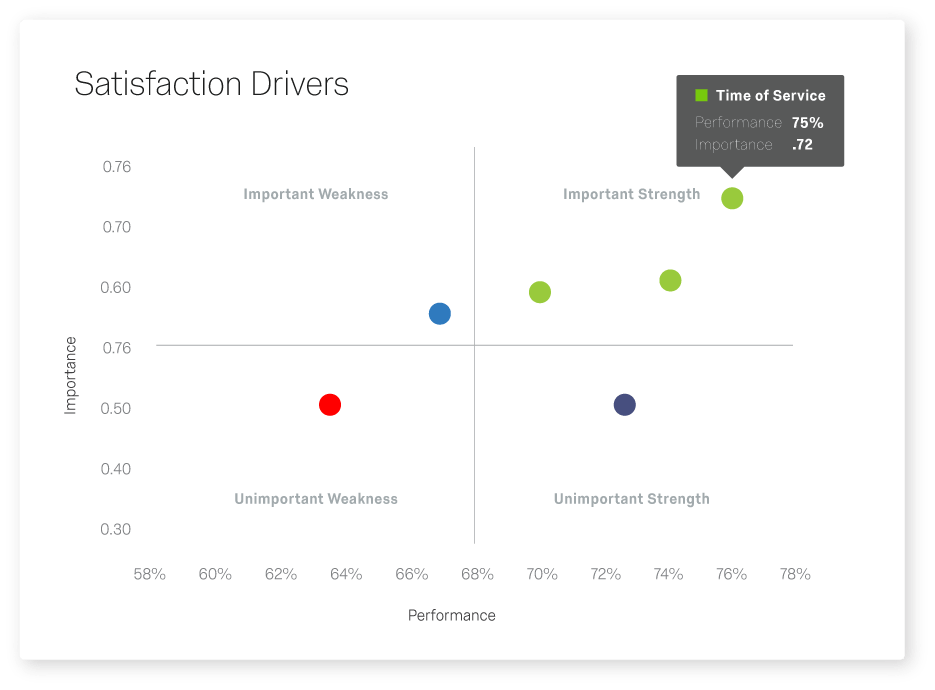
Handling good and bad customer feedback
To truly extract value from your customer feedback strategy, you need to leverage customer feedback. However, your customer service team might not be familiar with how to address good and bad feedback correctly – and to transform customer responses into actionable feedback.
Addressing Unhappy Customers
Though negative feedback is often difficult to receive, it can be very useful for sourcing problems and taking targeted action.
The key to addressing negative feedback is to show empathy and resolve problems. A good strategy for handling bad feedback is as follows:
- Address the customer personally, and thank them for their feedback. Customers don’t want to feel like just another number – and their feedback, even if it is negative, is welcome.
- Apologise and show sympathy. Your support team needs to show they can sympathise with the customer – even if they can’t put themselves in the customer’s shoes. An apology doesn’t mean it was your fault, but it will go a long way to making a customer feel more positive.
- Take responsibility. It might be that the issue wasn’t down to your team – but acknowledging that the customer has had a bad experience that’s caused bad feedback to be given is important. Reassure the customer that this experience is isolated and that you continue to maintain high standards.
- Correct the issue. Be specific in how you address the issue – and make sure you actually resolve it. Give details and communicate to the customer any changes you’re making as a result of their feedback. If the issue can’t be fixed, inform the customer of resolutions you’re making to avoid it happening in the future.
- Request another chance for their business. The fact that you have received feedback from your customer is encouraging – so ask them if they’d be willing to continue to do business with you. If you’ve used a proactive method of approaching their negative feedback, they may think you’ve done enough of an outstanding job to warrant returning.
Addressing Happy Customers
Positive feedback is always welcome – but you can transform a singular customer success story into an opportunity to increase customer loyalty.
The trick to improving your chances of customer retention is to reward loyal customers for their efforts – and for their responses to your request for customer feedback. A solid strategy to leverage customer feedback is to:
- Address the customer personally, and thank them for their feedback. Customers who have taken the time to give you feedback are much more likely to continue to do so. It’s important to thank them for taking the time to inform you of a customer success story.
- Reward them for providing feedback. Offer your customer a reward for providing a response to incentivise them to get back to you the next time you’re collecting customer feedback.
- Request further feedback. Ask them about a different aspect of their experience to get a fuller picture.
- Encourage them to follow through on their feedback. Often, even if a customer says they would recommend you, they don’t – so encourage them to do so, making it easy for them to share their view on your brand.
- Offer them further products and services. If they love one product or service and are happy enough that they give you positive feedback, build on that customer success by offering them more of the same.
- Share the positive review with your team and with the wider world. Your customer care team needs positive reinforcement too – and great feedback from real customers helps cement your brand’s good reputation.
Omnichannel customer feedback
Whether feedback is direct or indirect feedback, it’s key that you think in ‘omnichannel’ terms. What that means is understanding that feedback doesn’t exist in a vacuum, because neither do your customer interactions.
The relationship you have with your customers spans every touchpoint you can think of – across your owned channels, social media, third-party review sites, support phone calls, and email – and all those interactions combine to paint a picture that’s easy to miss if you’re only focussed on a couple of feedback sources.
The key to bringing all that sometimes disparate feedback together is to employ the right tools…
Omnichannel customer feedback tools
Ok, so you need to collate customer opinions from multiple sources and use it to inform actionable feedback – where do you start? Customer and experience management suites that use AI and natural language processing can automate that daunting task, and use machine learning to help you close the feedback loop.
Using a program like Driver iQ, for example, can help identify key drivers to make your business better. Driver iQ uses financial impact and advanced regression analyses to automatically recommend improvements you can make that have the highest ROI.
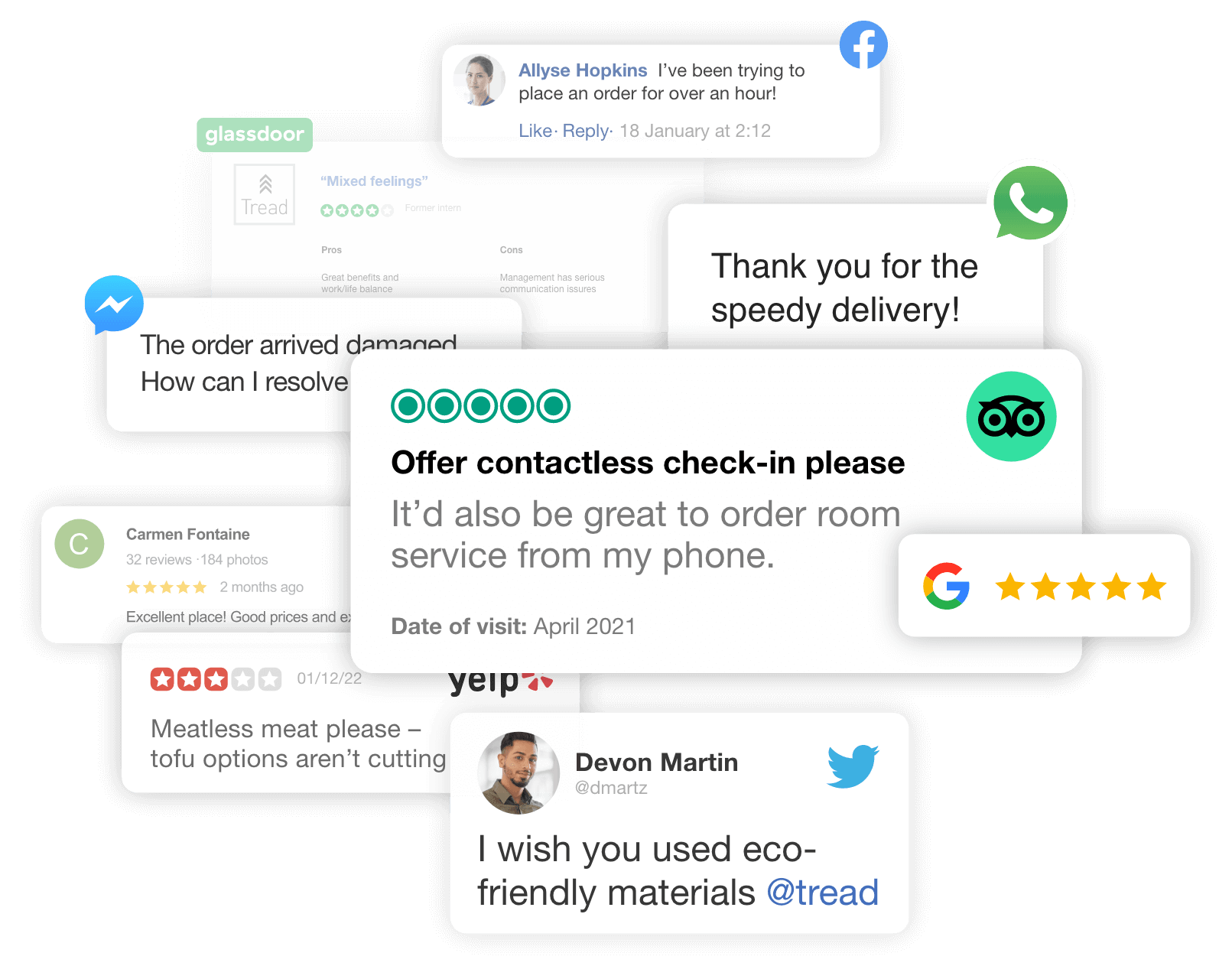
If you’re looking to learn more about customer emotion, effort, and intent across interactions and touchpoints, conversational intelligence software like Qualtrics XM Discover can make that a simple process – and one that happens automatically, rather than through rigorous outreach.
Discover is designed to make customers feel heard no matter where or how they speak, turning the complicated minefield of customer reviews, feedback, and conversations into a straightforward route towards improvement – with clear analytics and pragmatic, actionable suggestions.
How omnichannel customer feedback affects customer satisfaction
Collecting and analysing any customer feedback is a good start, but tapping into metrics like customer effort score, as well as being able to monitor emotion and intent at specific parts of their journey – and across every touchpoint – is what really separates businesses that listen to their feedback and those that don’t.
That’s because doing so will give you a much clearer view of how certain experiences elicit different responses, which will, in turn, show you what to prioritise, what double down on, and – crucially – how your actions to change those experiences affect customer retention.
What does Omnichannel mean, exactly?
In other words, customer feedback is not only instrumental in generating powerful insights, but also in its ability to inform changes and improve customer satisfaction. After all: happy customers are loyal customers, and they’ll help convince the people in their circles to purchase from you.
That loop – of making positive changes based on a deep understanding of your customers’ experiences – is what drives customer satisfaction. And it’s customer satisfaction that drives organisational success in the long run.
Get started with our free customer satisfaction survey template